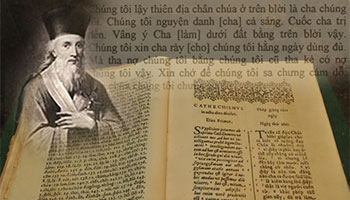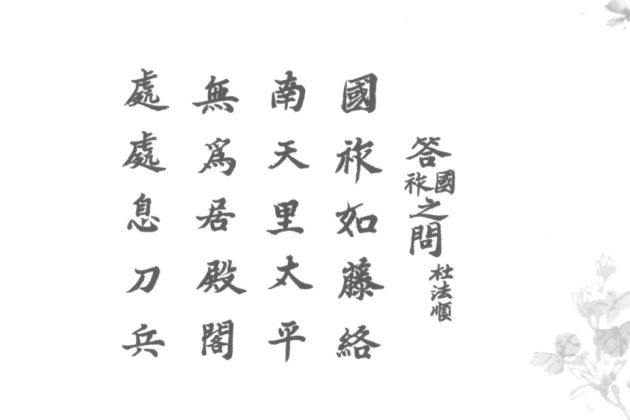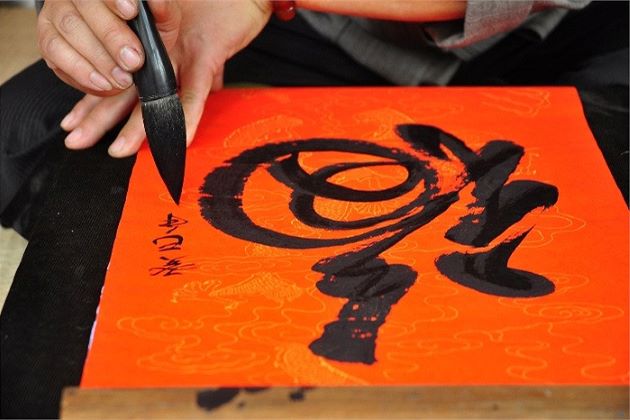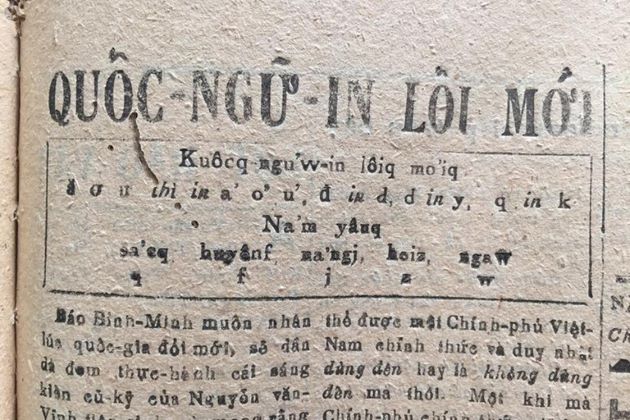The Vietnamese language is more than just a way to communicate – it’s a living archive of Vietnam’s history. With six tones and a unique blend of indigenous, Chinese, French, and global influences, Vietnamese has evolved over millennia to become the language spoken by over 90 million people in Vietnam and millions more worldwide. From the ancient Red River Delta to French colonial classrooms, from characters carved in Chinese script to a Latin-based alphabet, the journey of the Vietnamese language is one of resilience, transformation, and national pride.
Let’s break down this fascinating evolution into five key periods.
Proto Viet – Muong: Vietnamese Language in the Building & Defending the Country
Linguistic research has revealed many similarities between Vietnamese and other regional languages. Most scholars agree that the Vietnamese language originated locally, as part of the Austroasiatic language family – specifically from the Viet-Muong subgroup of the Vietic branch. This makes Vietnamese a close linguistic relative of Muong and Khmer, with additional influences from Nguon, Pong Chut, Tai-Kadai languages, and ancient Chinese.
For example, the Vietnamese word “tay” (hand) has similar counterparts in other regional languages: “thai” in Muong and “tai” in Khmer. These linguistic echoes point to a shared ancestry deeply rooted in mainland Southeast Asia.
In early history, Vietnamese-speaking communities were concentrated in the Red River Delta, while Muong-speaking groups lived in the mountainous areas of Hoa Binh, Son La, and Phu Tho. This geographic separation, combined with external cultural interactions, helped shape the early stages of what would eventually become the modern Vietnamese language.
Vietnamese Language in China’s Occupation
The Vietnamese language was significantly influenced by Chinese due to over a thousand years of occupation (from 111 BC to 938 AD). During this time, Chinese culture and language deeply penetrated Vietnamese society, though not evenly across all regions. The delta regions, being closer to centers of Chinese control, absorbed more Chinese influence compared to the mountainous areas where local ethnic groups, such as those speaking Pong Chut and Muong, maintained more linguistic independence. This created a clearer distinction over time between Pong Chut and Viet-Muong linguistic characteristics.
Due to China’s aggressive assimilation policies, Han script (Chữ Hán) and Confucian ideology dominated official life in Vietnam. These scripts were used in administration, education, and imperial examinations. “Chữ Nho” (Classical Chinese), though no longer used in daily writing, is still present in Vietnam today – often seen on calligraphy scrolls during Lunar New Year (Tết), or in ceremonial contexts like weddings and ancestral altars.
However, Vietnamese people didn’t simply adopt Chinese culture; they adapted it. To preserve their identity, they borrowed thousands of Chinese words, restructured or redefined them, and integrated them into daily Vietnamese usage – these became known as Sino-Vietnamese words (Hán-Việt). Common techniques included altering the order of word elements or shifting meanings to better suit local understanding.
The result was a uniquely hybrid language that resisted full assimilation while still benefiting from Chinese linguistic systems.
Vietnamese Language in Temporary Independence Period
Even after achieving periods of independence, the influence of Chinese language and thought remained strong. However, this time, the Vietnamese were more active in reclaiming and reshaping their linguistic identity.
One of the most important milestones during this period was the creation of “Chữ Nôm”, a script developed by the Vietnamese to write their native language using Chinese-based characters. This script represented a significant step toward linguistic independence, allowing Vietnamese people to express their own thoughts, stories, and cultural values in a form closer to how they actually spoke.
Though Chữ Nôm was never the official script of the royal court – which still used Classical Chinese – it gained popularity throughout society, especially in literature and folk art. The most iconic work written in Chữ Nôm is “The Tale of Kieu”, the literary masterpiece by Nguyễn Du, which remains a cornerstone of Vietnamese literature today.
This period marked the beginning of what could be called the “Vietnamization” of written language. Instead of passively absorbing foreign elements, Vietnamese writers and scholars actively transformed them to better reflect national identity, thought, and experience.
Vietnamese Language in French Colonization
During the French colonial period (mid-19th century to mid-20th century), French became the dominant language in administration, education, and elite society. This era marked a major turning point in the evolution of the Vietnamese language, introducing new vocabulary and a major shift in writing systems.
Vietnamese society was heavily influenced by Western culture, and as a result, the language absorbed many loanwords from French. Common everyday terms like “bờ lu” (from bleu – blue), “măng sét” (from manchette – cuff), “may ô” (from maillot – undershirt), and even technical terms like “vắc xin” (from vaccin), “axít” (acid), and “ba zơ” (bazaar) all came from French and became embedded in Vietnamese speech.
The most revolutionary development, however, was the creation and popularization of Chữ Quốc Ngữ – the Latin-based Vietnamese script. Originally developed by Catholic missionaries such as Alexandre de Rhodes in the 17th century, it used Romance language alphabets and diacritics to represent Vietnamese tones and sounds more accurately than Chinese characters ever could.
Although Chữ Quốc Ngữ was not officially adopted immediately, it gradually gained traction – especially after the Gia Định Báo, the first Vietnamese newspaper in Chữ Quốc Ngữ, was published in 1865. By the early 20th century, this script had become the foundation of modern Vietnamese literacy, largely replacing Chữ Hán and Chữ Nôm in both education and media.
This period laid the groundwork for the standardization of Vietnamese, making it more accessible, easier to learn, and eventually, unifying the way Vietnamese was read and written across the country.
Vietnamese Language after the August Revolution until Now
Following the August Revolution of 1945, Vietnam declared its independence – and with it came a stronger push to establish a national identity, including through language.
Chữ Quốc Ngữ officially became the national script, known also as chữ phổ thông (standard script). It was promoted as the primary language of education, governance, literature, and communication across all regions of Vietnam. The modern Vietnamese language was enriched with a massive vocabulary base including:
Native Vietnamese words
Sino-Vietnamese vocabulary
Loanwords from French and English, especially in fields like science, technology, and pop culture
Over time, efforts were made to standardize spelling, grammar, and usage, making the language more consistent nationwide. Vietnamese is now taught formally in schools from early education through higher levels, and is used in everything from government policy to global diplomacy.
Thanks to the Vietnamese diaspora and the digital age, the Vietnamese language continues to evolve and spread. Today, it is spoken by Vietnamese communities worldwide and studied by language enthusiasts and cultural travelers alike. In recent years, it has also gained more visibility online, in media, and even on international learning platforms.
Vietnamese Language – A Living Heritage That Speaks Through Time
The journey of the Vietnamese language reflects the resilience, creativity, and cultural pride of the Vietnamese people. From ancient Viet-Muong roots and Chinese influences to French colonial impact and modern global adaptation, the language has been constantly evolving — yet never losing its soul.
Today, Vietnamese is not just a tool for communication, but a living heritage that connects generations, preserves identity, and welcomes travelers into the heart of Vietnam’s stories, customs, and daily life.
If you’re planning to explore Vietnam, immersing yourself in the local language — even just a few words — can transform your experience. From understanding signs and menus to connecting with locals in authentic ways, language is the bridge to deeper travel.
Ready to take your Vietnam journey beyond the typical tourist route? Discover authentic cultural experiences with trusted Vietnam local tour operators who can guide you through the language, the history, and the heart of the country.





